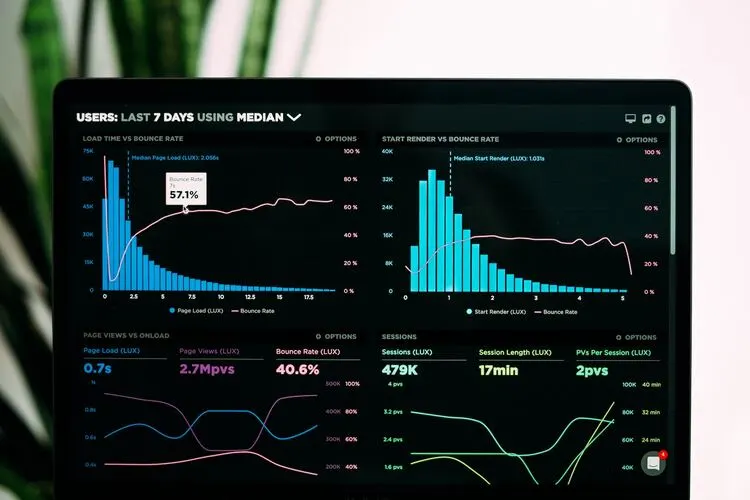Maximizing Your Link Insertion Strategy: Tips for Identifying the Best Opportunities for Adding Links
Links are a crucial aspect of any successful website. They not only improve your website’s visibility in search engine rankings but also drive traffic and boost your overall online presence. However, randomly adding links without a well-thought-out strategy can be ineffective and even harmful to your website’s reputation.

To maximize the impact of your link insertion strategy, it’s essential to identify the best opportunities for adding links, including utilizing professional link insertion services. In this blog post, we will explore effective tips to help you identify high-traffic pages and content with high engagement rates where inserting links, with the assistance of a reliable link insertion service, can bring significant benefits.
1. Analyze Your Website’s Analytics
The first step in identifying the best opportunities for link insertion is to analyze your website’s analytics. Use a web analytics tool, such as Google Analytics, to gain insights into the performance of your web pages. Look for pages that receive the highest traffic, have low bounce rates, and attract engaged visitors. These pages are prime candidates for link insertion, as they already have a substantial audience.
2. Conduct Competitor Research
Competitor research can provide valuable insights into identifying potential opportunities for link insertion. Analyze the websites of your competitors within your niche and look for pages that attract high levels of engagement and receive frequent backlinks. Identify the types of content and topics that resonate well with your target audience, and consider inserting links within similar contexts on your own website.
3. Explore Guest Blogging Opportunities
Guest blogging is an effective way to build relationships with other websites in your industry while gaining exposure to a broader audience. Identify high-authority websites or blogs that accept guest posts and align with your niche. By contributing high-quality, informative articles as a guest author, you can insert relevant links back to your website within the content. This not only helps with link building but also drives targeted traffic from the guest blog’s audience.
4. Leverage Internal Linking
While external links are important, internal linking should not be overlooked. By strategically linking relevant pages within your own website, you can guide visitors to explore additional content, increasing their engagement and time spent on your site. Identify popular pages and posts on your website and insert links to relevant content that adds value to the user experience. This not only improves user engagement but also strengthens the overall structure of your website in the eyes of search engines.
5. Monitor Social Media Engagement
Social media platforms can provide valuable insights into the content that resonates with your audience. Monitor the engagement levels, comments, and shares of your social media posts to identify the topics and types of content that generate the most interest. Once you identify high-engagement posts, consider adding links to relevant pages on your website within your social media content. This can help drive traffic from your social media platforms to your website, increasing visibility and engagement.
6. Utilize Content Repurposing
Content repurposing allows you to leverage existing content and give it new life by presenting it in different formats. Identify high-performing blog posts, articles, or guides on your website that have generated substantial traffic and engagement. Repurpose this content into other formats such as infographics, videos, or podcasts. When you insert links within these repurposed pieces, you can attract a new audience and drive traffic back to the original content on your website.
7. Collaborate with Influencers and Industry Experts
Partnering with influencers and industry experts can significantly enhance your link insertion strategy. Identify influential individuals within your niche who have a substantial online presence and a strong following. Collaborate with them on content creation, such as interviews, guest posts, or joint projects. By inserting links within the collaborative content, you can tap into their audience and benefit from their credibility and reach.
8. Conduct Keyword Research
Keyword research is essential for optimizing your website’s content for search engines. While identifying high-traffic pages, pay attention to the keywords that are driving organic traffic to those pages. Conduct comprehensive keyword research to identify additional opportunities for inserting links based on popular search terms. By strategically placing links within content optimized for relevant keywords, you can improve your website’s visibility and attract targeted traffic.
9. Monitor Backlink Profiles
Monitoring your backlink profile is crucial for identifying opportunities to insert links. Utilize backlink analysis tools to identify websites that have linked to your competitors or similar websites within your industry. Reach out to these websites and propose adding a link to your website’s relevant content. By targeting websites that are already open to linking to similar content, you increase your chances of successfully securing new backlinks.
10. Stay Updated with Industry Trends and News
To identify the best opportunities for link insertion, it’s essential to stay updated with industry trends and news. Follow industry-specific blogs, news sites, and forums to stay informed about the latest developments, discussions, and trending topics. When you come across relevant news or trends, create content that provides valuable insights and insert links to related resources on your website. This positions your website as a go-to source for up-to-date information and increases its visibility among your target audience.

